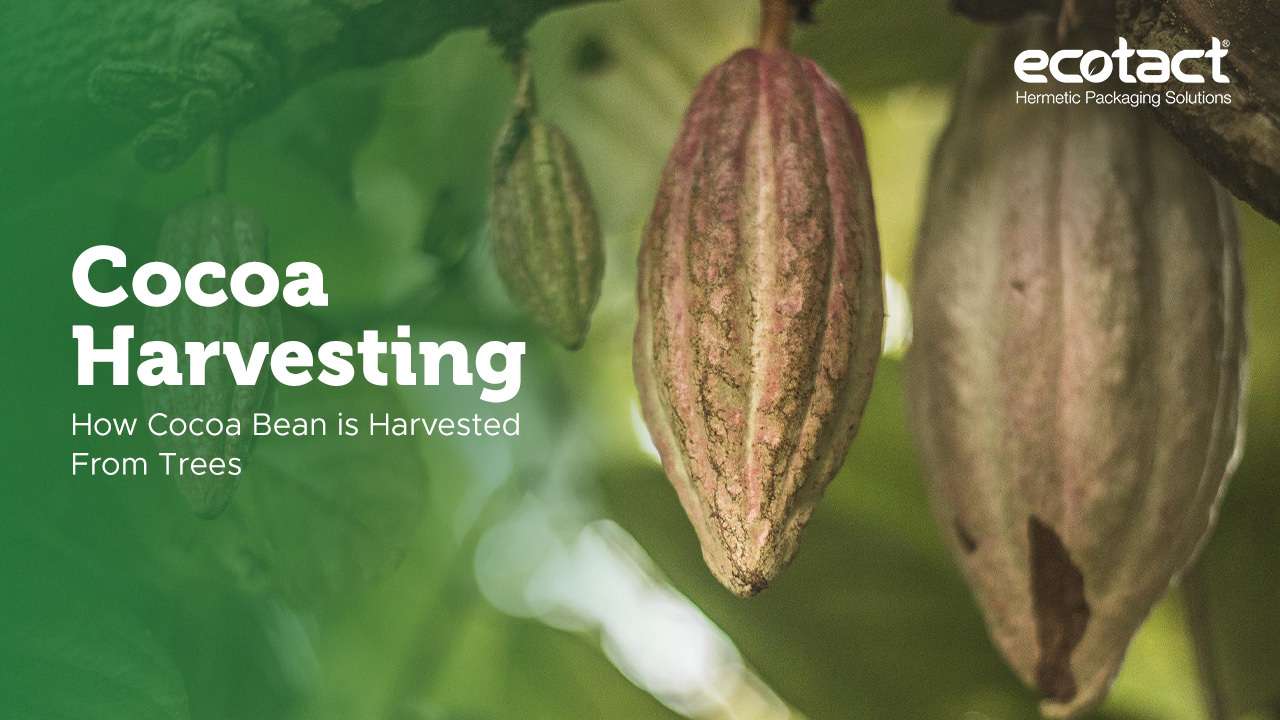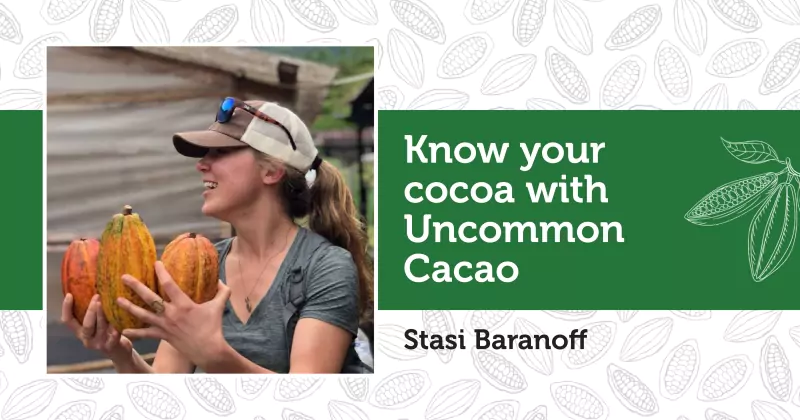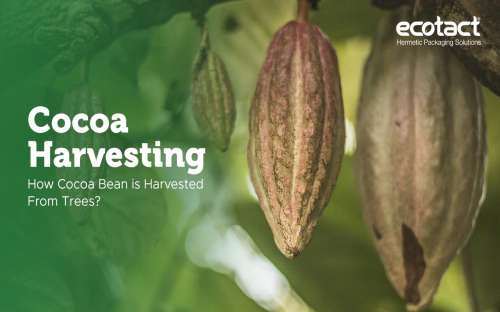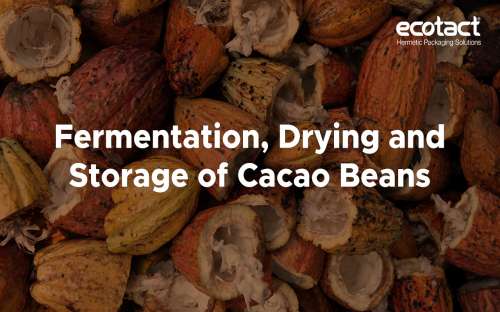Introduction
Where does the cocoa, the substance- that adds magic to every chocolate in the world, come from? How are cocoa beans harvested? Harvesting cocoa beans is a prolonged process that requires a systematic manual approach to produce premium quality cocoa. It is a step-by-step procedure that requires one simple tool that plays a starring role- a machete knife. From harvesting to sustainable packaging this blog has everything covered.
The right setup for cocoa harvesting
To begin with, any given chocolate in the world starts off as a pod from the branch of a cocoa tree that grows in the tropics. A land with optimal temperature, relative humidity of around 70%, and rainfall is the perfect setup for producing cocoa. They grow in nitrogen-rich soil that is well-drained. The Ivory Coast in West Africa is the largest producer of cocoa. Regions like South America & Indonesia are the tropical & equatorial territories where cocoa beans are produced, harvested & then exported around the world.
Getting started with the cocoa harvesting process
The following steps will make everything about the cocoa harvesting process easy to follow. Once the harvesting process is complete, your premium quality cocoa seeds are all set for packaging & shipping.
Step one - Picking ripened cocoa
Around the harvest period, the sight of colourful cocoa pods is noteworthy. They turn into a vibrant red, green or dark purple. However, as they move towards their ripening stage, the pods develop a pale yellowish shade. Further identification occurs through a pod’s shape or by tapping the ripened points on the pod. The idea is to ensure that the cocoa beans aren’t tightly held & are loosely scattered within the pod.
Step two- Cutting the pods carefully
This step is where the picker needs to be very cautious as it can affect how the crops yield in the future. With a pruning hook, curved knife or machete, pick the pod and gently cut it off without damaging the surrounding flowering area on the branch where the next pod would grow. Hence, with the right style of cutting, your crop can yield tremendously.
Step three- Extracting the beans
This process requires the picker to gently place all the pods together and make a clean cut through the stalk with a sharpened knife/blade or crack open them to separate the beans from the seed pods. About 30-50 seeds are found in a single pod that the farmers manually remove.
Step four - Fermenting the beans
This is a very significant step in the two-stage process before preparing the beans for sale. To bring out the deep flavour, the semi-wet cocoa seeds are left to ferment in a box for about a week. The pulp gets converted into alcohol and prevents further germination of any type. Once the liquid drains off, the beans left behind are prepared for the next step.Step five- Drying the beans
ICCO states that the most optimal way to dry the beans is in natural sunlight. In case the regional climate is prone to rainfall, then adapting to the artificial drying process is the only choice. Until the beans' moisture levels fall to about 10% or lower, it’s best to leave them to dry. They are dried in large wooden boxes or beds to ensure they evenly dry from all sides. It takes about a week for the drying stage to complete.
Step six- Ageing the beans
There lies supreme importance of ageing the coffee beans in suitable conditions. Keep the moisture levels in check and let the beans age naturally spanning from a period of a few months to a year. As per a study, high levels of antioxidants and flavan-3-ol content are present in cocoa powder & cacao seeds for the longest possible period.
Step seven - Storing the beans
Finally, the cocoa beans are imbued in deep reddish-brown hues. They are ready to be packaged and shipped to manufacturers across the world. It is inevitable to keep the beans completely dried keeping moisture & oxygen completely out. Using hermetic bags is a great way to keep the beans garden-fresh.
Why is packaging significant in harvesting cocoa beans?
Drying is a post-harvest technique to essentially preserve the grain quality. There is no compromise on precision & accuracy while performing this step thereby making cacao packaging an integral part of logistics. Even before being bagged for delivery, the coffee beans could get lumpy if the packaging isn’t airtight. By picking fully recyclable, transparent plastic bags one can ensure a flavour-saving packaging that preserves freshness. If the cacao bags are designed with a multilayered structure, it naturally becomes more effective than single-layer packaging. The Ecotact Troiseal bags, as the name suggests have the ultimate vacuum-sealed protection and a high-temperature resistance up to 90 degrees Celsius that locks the freshness for the longest period thereby eliminating heat, moisture and mold growth completely. And so much so that the end-users can relish premium-quality chocolates sitting halfway across the world!
 English
English
 Spanish
Spanish French
French


